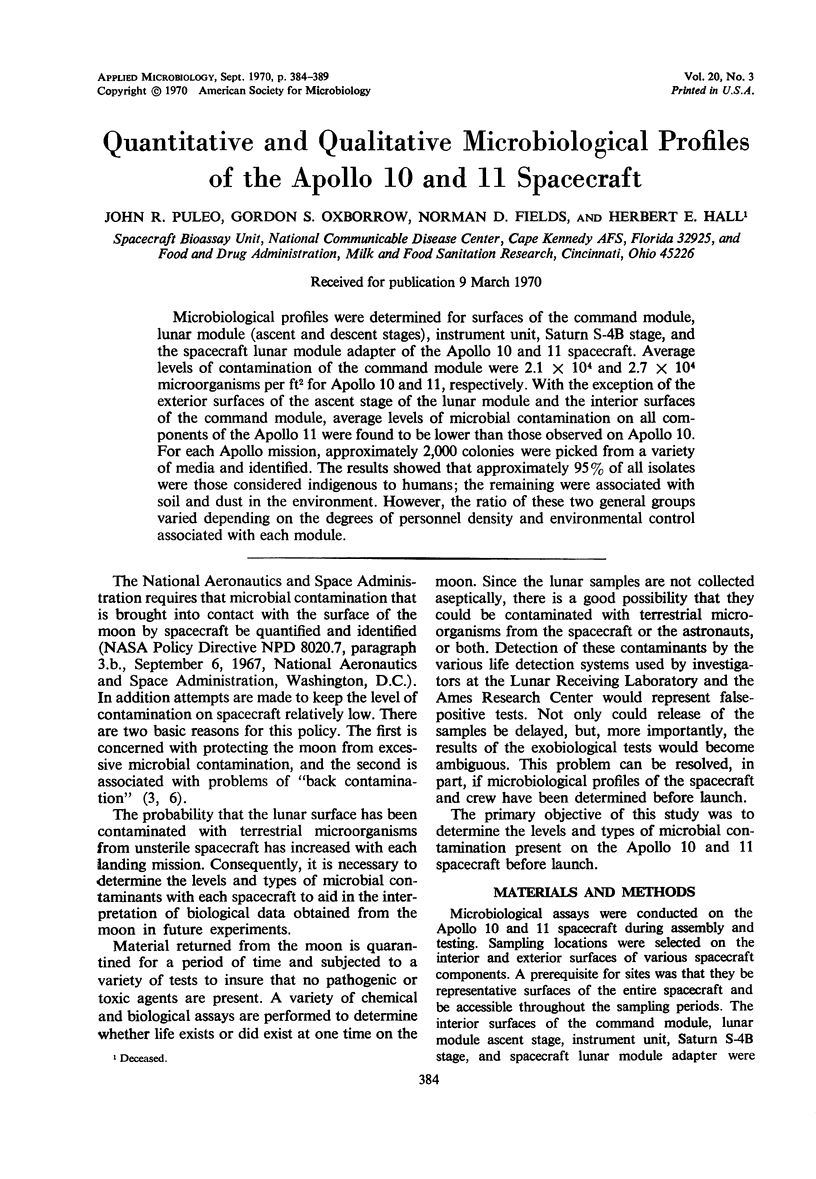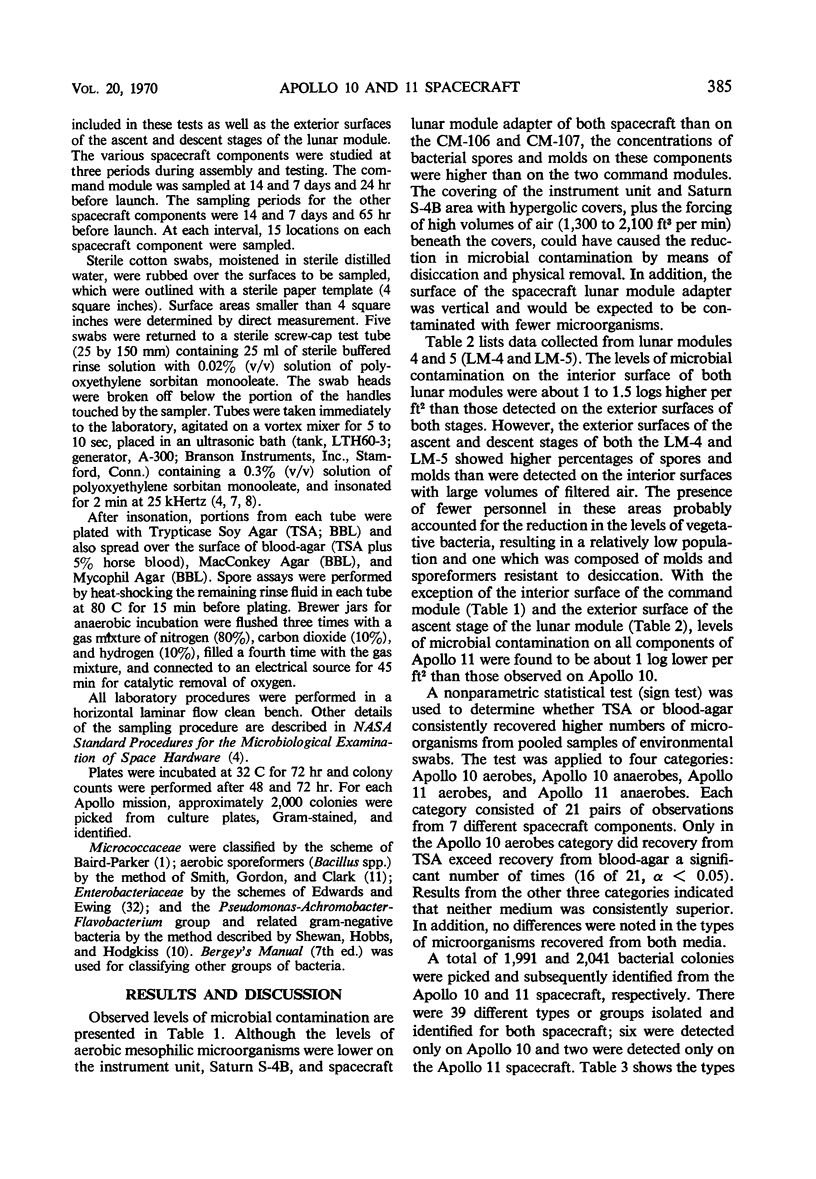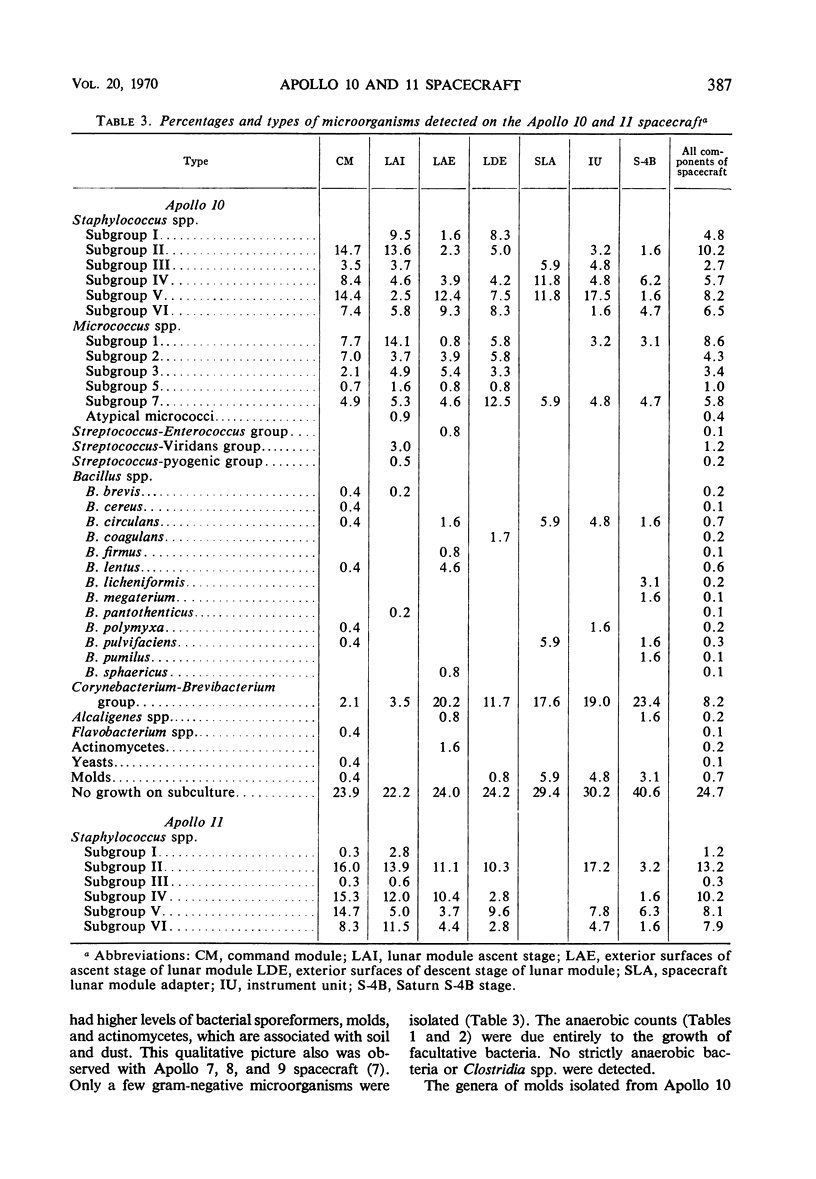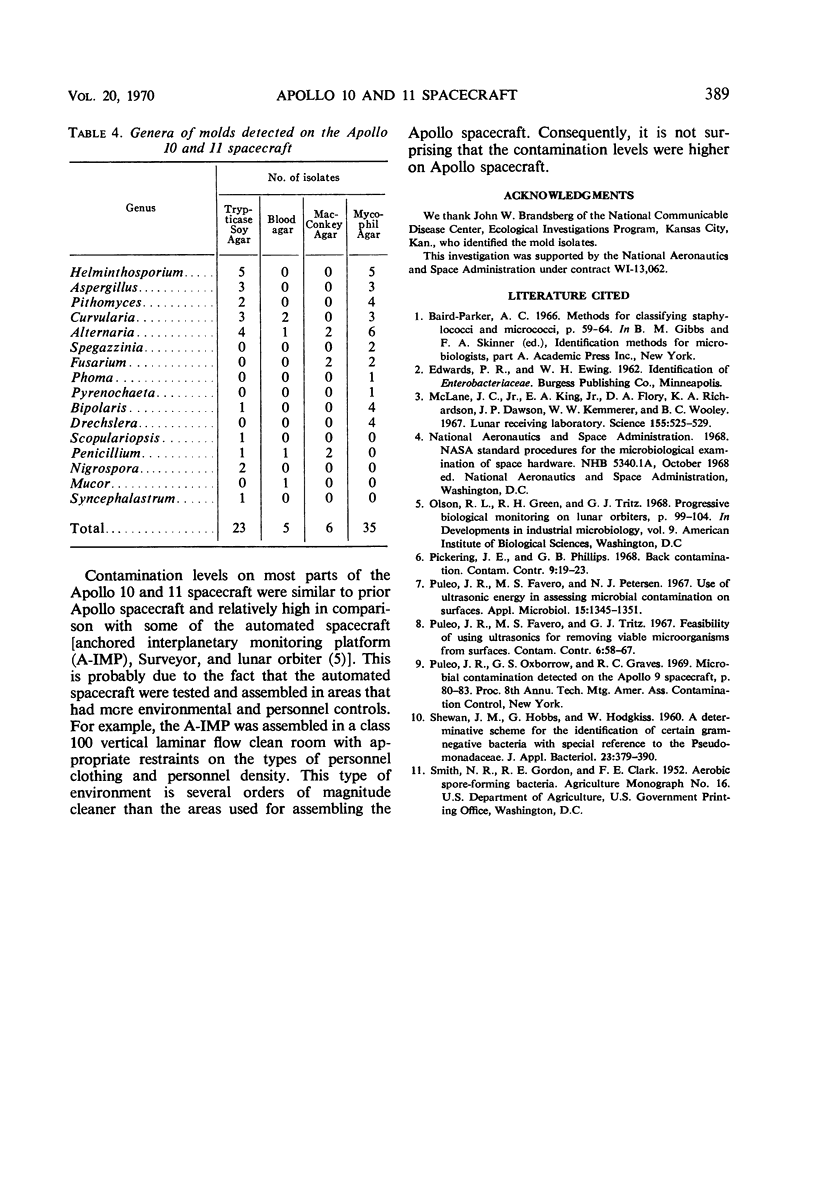Abstract
Microbiological profiles were determined for surfaces of the command module, lunar module (ascent and descent stages), instrument unit, Saturn S-4B stage, and the spacecraft lunar module adapter of the Apollo 10 and 11 spacecraft. Average levels of contamination of the command module were 2.1 × 104 and 2.7 × 104 microorganisms per ft2 for Apollo 10 and 11, respectively. With the exception of the exterior surfaces of the ascent stage of the lunar module and the interior surfaces of the command module, average levels of microbial contamination on all components of the Apollo 11 were found to be lower than those observed on Apollo 10. For each Apollo mission, approximately 2,000 colonies were picked from a variety of media and identified. The results showed that approximately 95% of all isolates were those considered indigenous to humans; the remaining were associated with soil and dust in the environment. However, the ratio of these two general groups varied depending on the degrees of personnel density and environmental control associated with each module.
Full text
PDF





Selected References
These references are in PubMed. This may not be the complete list of references from this article.
- McLane J. C., Jr, King E. A., Jr, Flory D. A., Richardson K. A., Dawson J. P., Kemmerer W. W., Wooley B. C. Lunar receiving laboratory. Science. 1967 Feb 3;155(3762):525–529. doi: 10.1126/science.155.3762.525. [DOI] [PubMed] [Google Scholar]
- Pickering J. E., Phillips G. B. Back contamination. Contam Control. 1968 Sep;7(9):19–23. [PubMed] [Google Scholar]
- Puleo J. R., Favero M. S., Petersen N. J. Use of ultrasonic energy in assessing microbial contamination on surfaces. Appl Microbiol. 1967 Nov;15(6):1345–1351. doi: 10.1128/am.15.6.1345-1351.1967. [DOI] [PMC free article] [PubMed] [Google Scholar]
- Puleo J. R., Favero M. S., Tritz G. J. Feasibility of using ultrasonics for removing viable microorganisms from surfaces. Contam Control. 1967 Apr;6(4):58–passim. [PubMed] [Google Scholar]


